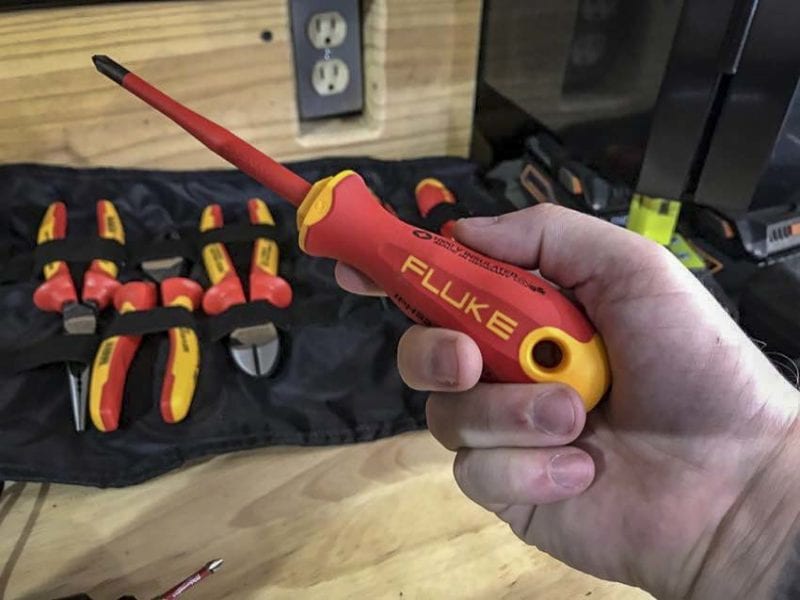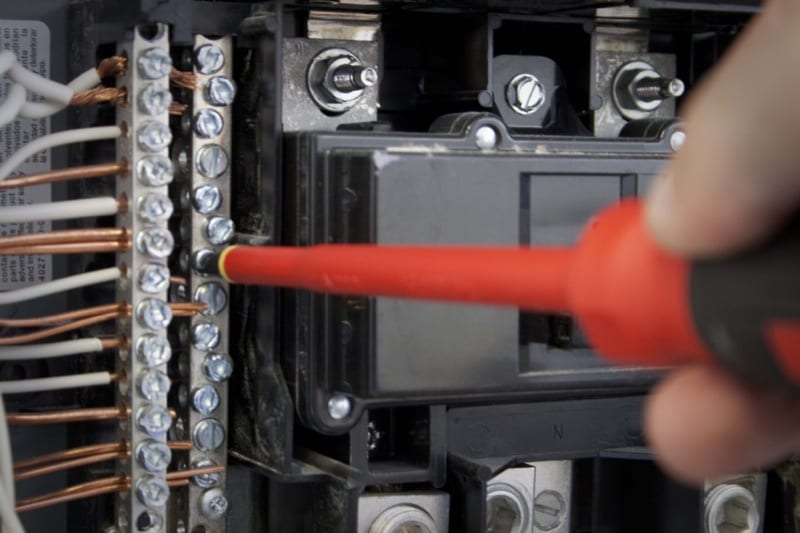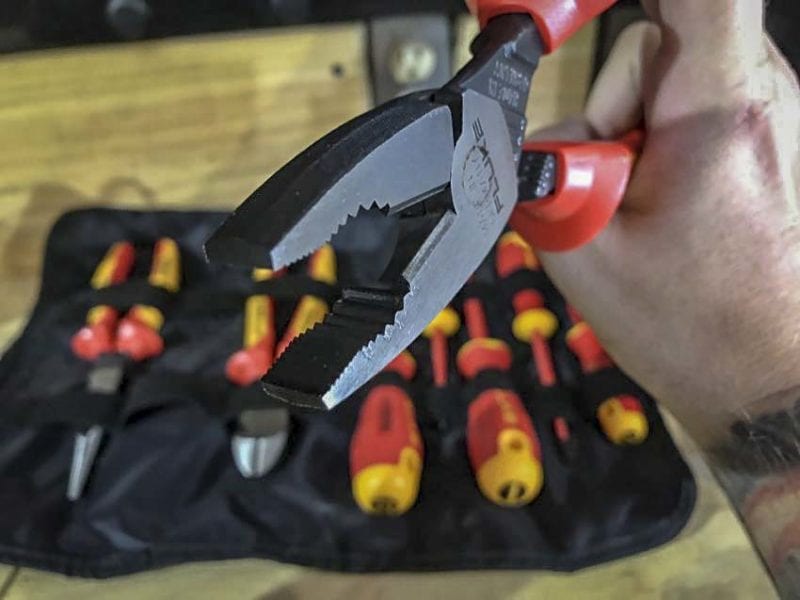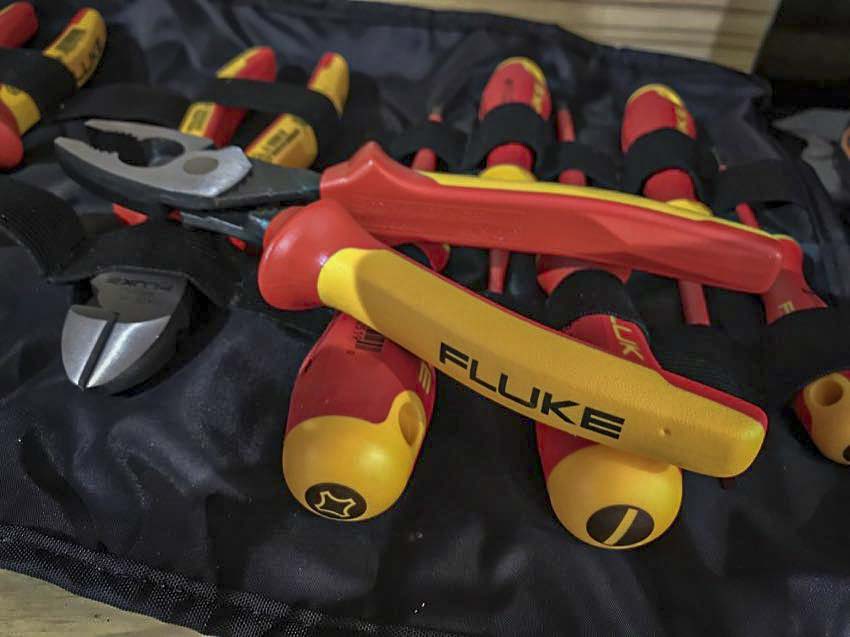A question we hear a lot is: Do I need to use insulated hand tools for electrical work? If you doing any type of electrical work, insulated tools come highly recommended. They may even come as a requirement depending upon the job. Remember that, just because your screwdriver or pliers have plastic handles, this doesn’t guarantee they can and will insulate you from an electrical shock.
The NFPA 70E standard covers the topic of when you need to use insulated tools in electrical work. This international standard states that you should use insulated tools when working on or near electricity greater than 50V. This article covers the rules that dictate if you need to use insulated tools on the jobsite. It also covers why to use insulated hand tools, breaking down the way these tools differ from standard electrical hand tools.
A Different Type of Construction
While regular pliers and screwdrivers may have plastic or nylon handles, they won’t insulate the user against contact with a high-voltage electrical line. High voltage can travel along the steel core of the tool and quickly make the jump to the user through that thin plastic handle.

When you deal with high voltages, insulated tools provide real electrical insulation up to 1000V AC or 1500V DC. Regular screwdrivers and pliers have plastic or nylon handles. These don’t protect you against contact with a high voltage electrical line. The difference between these and regular hand tools is that insulated tools provide true electrical isolation on the handle.
Editor’s Note: Check out our article on the Difference Between Master and Journeyman Electricians
When to Use Insulated Hand Tools for Electrical Work
If you only work on low voltage wiring, then you may not need insulated hand tools. However, if you’re starting out as a professional electrician, these tools should definitely be in your tool bag. Use them any time you might be in a situation where a wire could become hot—even through no fault of your own.
Finally, be sure to read the labels. Insulated electrical hand tools will be clearly labeled to protect to a specific level of voltage. Normally insulated hand tools have two layers of insulation and they must meet the industry standards of ASTM F1505. These tools typically cost more, but they are definitely worth the protection.
Do Not Use Insulated Tools on Live Circuits!
The insulation on these hand tools goes all the way to the back end of the handle to protect you from accidental contact with high voltage.
Notice we said “accidental”.
You should almost never be working on a live wire. Just because you have an insulated hand tool doesn’t mean you can use it to pry up on a high-voltage bus bar. If you nick the insulation on the tool, it’s no longer protecting you as it should.

Insulated tools are simply another level of safety and protection. Think of them like you do seatbelts, airbags, or the ABS system in your car. Hopefully, you never need them, but all three work together to keep you safe.
Before starting any electrical work, always check for current. You want to verify that the circuits are off before you access any potentially live wires.
Standards Govern When You Need to Use Insulated Hand Tools
NFPA 70E, referenced above, also provides information to help electricians and companies comply with OSHA 1910 Subpart S (Occupational Safety and Health Standards-Electrical) and OSHA 1926 Subpart K (Safety and Health Regulations for Construction-Electrical). It helps avoid electrical-related accidents, liability, and loss. It also provides information on safety-related best practices at work as well as special equipment (PPE) and maintenance requirements.
In 2021 the NFPA 70E made some revisions to Article 110. It incorporated the general requirements for electrical safety-related work programs, practices, and procedures from other articles. 2021 saw expanded definitions and recommendations for arc-resistant equipment (Table 130.5(C)). It also added information (Article 360) to address several electrical safety requirements when working with high voltage capacitors. Lastly, they updated some calculation methods (referencing reference IEEE-1584-2018) for setting arc flash boundaries.
Using insulated hand tools doesn’t preclude you from understanding these rules, standards, and codes. The more informed you are as a professional, the better you can avoid accidents on the job.
Differences in Construction
We covered insulated screwdrivers above. For insulated hand tools like pliers and cutters, the insulation necessarily starts at the handle. These tools feature thick insulation that protects the hand against high voltage in the event you accidentally cut a live wire. They also typically have a thicker barrier at the top of the handle. This keeps your hand from slipping or sliding above the insulation.

Stay safe. If you aren’t certain what your tools are rated for—check the labels. Electrical pliers, screwdrivers, and crimpers all come clearly labeled.
Insulated hand tools also typically use two layers of insulation and meet the ASTM F1505 standard.
Why You Should Use Insulated Hand Tools
While these products typically cost more, they provide much-needed protection. You can’t undo a high-voltage incident. Stay safe and use the protection that gloves, insulated hand tools, and other safety practices provide!



